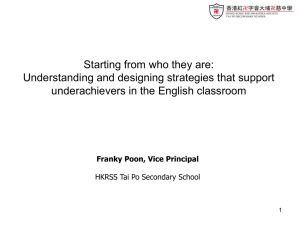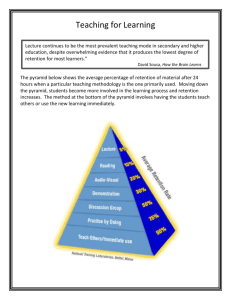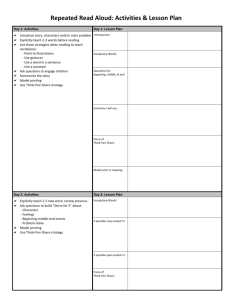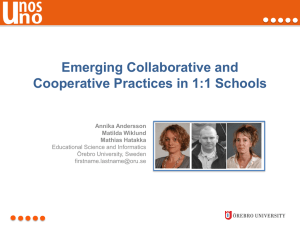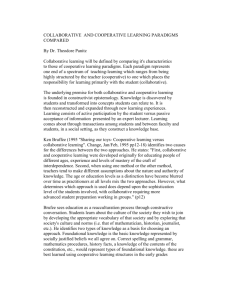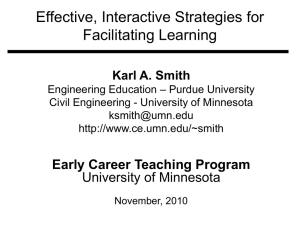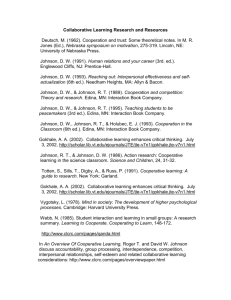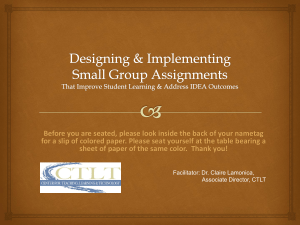Cooperative Grouping During Vocabulary
advertisement
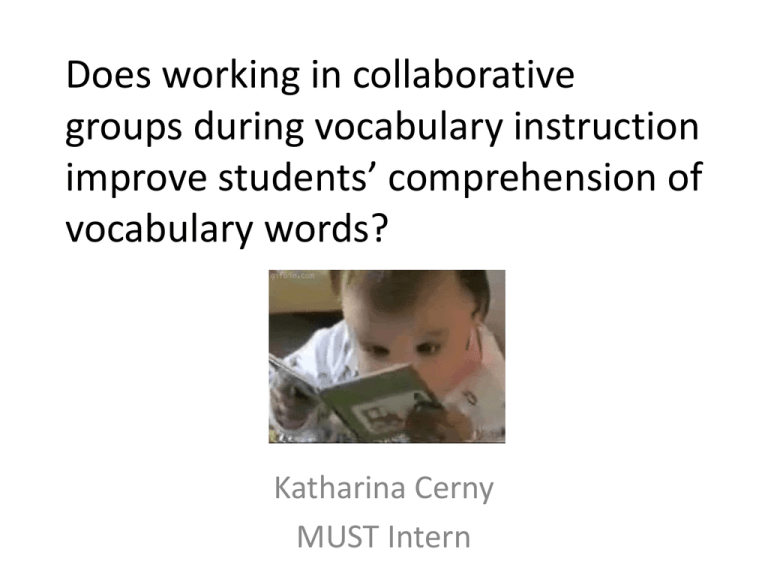
Does working in collaborative groups during vocabulary instruction improve students’ comprehension of vocabulary words? Katharina Cerny MUST Intern Katharina ‘Katie’ Cerny • Cleveland born and raised – Daughter of teacher/principal • Attended Holy Name High School (‘10), University of Dayton (‘14) • English major – Studied English literature in Italy for four months • Selected as sole Literacy Graduate Assistant at Cleveland State University Abstract • Collaborative vs. Traditional • Collaborative/Cooperative – Cooperative learning is a specific kind of collaborative learning • To see if students retain vocabulary words and definitions better in cooperative think-pairshare groups in comparison to traditional teacher led lessons. Literature Review • According to a study by Sasan Baleghizadeh (2010), participants in an experimental group followed the think-pair-share technique while the control group did the word building task individually. The experimental group achieved significantly higher scores than the controlled group. The result of the t-test indicated that the mean score of the experimental group (12.30) is significantly different from the mean of the control group, t (25) ¼ –8.20, P ¼ .001. This indicates that the students who completed the task collaboratively through the structured pair-work design of Think-Pair-Share produced more accurate answers than those who worked individually. Literature Review • Harmer (2001) states many advantages of pair work: recognizes “two heads are better than one,” increases speaking time students get during a class period, and promotes learner autonomy. • Johnson and Johnson (1991) said cooperative learning has four defining characteristics: positive interdependence, individual accountability, cooperation, and evaluation. Methods • Survey (Pre and Post Test) • Vocabulary Worksheet – Think-Pair-Share • Paired by high-low ability • Vocabulary Test Methods Limitations • Attendance is unpredictable – Having the same students present during each vocabulary lesson • Students willingness to communicate with their partner and not their friends Findings • Survey – Ranking how comfortable my students are in the following situations (1 = not at all comfortable & 5 = very comfortable) – Working Independently – Averaged 4.1 – Working in Groups – Averaged 3.5 Conclusion By the end of the third quarter, students’ ability to use vocabulary words will increase due to the think-pair-share technique. Thank you References Baleghizadeh, S. (2010). The effect of pair work on a wordbuilding task. ELT Journal: English Language Teachers Journal, 64(4), 405-413. doi:10.1093/elt/ccp097 Harmer, J. (2001). The Practice of English Language Teaching (Third edition). Harlow, UK: Longman. Johnson, D. W. and R. T. Johnson. (1991). Learning Together and Alone (Third edition). Englewood Cliffs, NJ: Allyn & Bacon.


